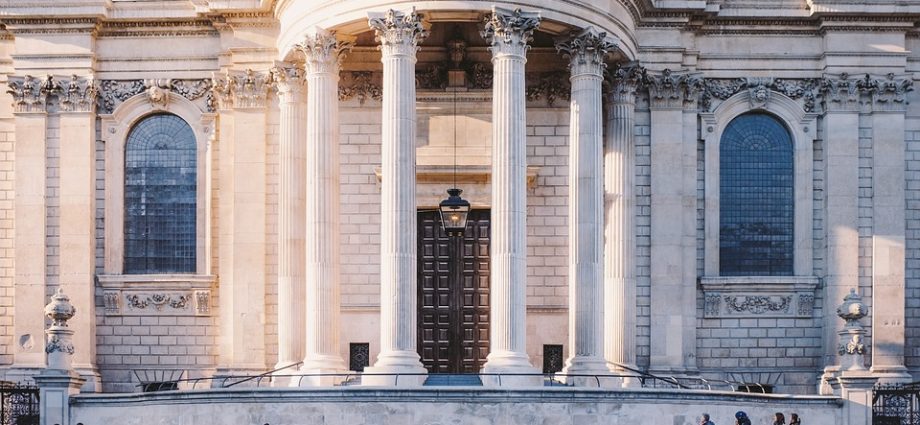Eastern Europe is home to some of the richest and most diverse architectural and artistic traditions in the world. With a history spanning over 1,000 years, the region has been shaped by a range of influences including Byzantine, Gothic, Renaissance, Baroque and Art Nouveau styles. From grand palaces to ornate churches, The Art and Architecture of Eastern Europe is truly awe-inspiring.
The Art of Eastern Europe
Eastern European art is a diverse collection of styles and movements that flourished throughout centuries. The Byzantine style influenced much of the region’s early art, leaving a lasting mark on the region’s iconography. The medieval period also saw the emergence of Byzantine-influenced frescoes and murals, many of which can still be admired in churches and monasteries across the region.
The Renaissance brought with it the emergence of naturalism in art, a development that was reflected in the works of artists such as Jan van Eyck and Albrecht Dürer. In turn, the Baroque period influenced the development of ornate architectural elements, characterised by grand, over-the-top flourishes.
Perhaps the most famous movement of Eastern European art is the Art Nouveau, which saw the emergence of elaborate, organic forms inspired by nature. This style spread throughout the region, especially in cities like Prague and Budapest, leaving behind iconic masterpieces such as the Municipal House in Prague and the Széchenyi Spa in Budapest.
The Architecture of Eastern Europe
Eastern European architecture is equally as diverse, with each country boasting its unique blend of different styles. In Hungary, for example, Gothic architecture can be seen in the grand Matthias Church, while more Baroque-inspired buildings such as St. Stephen’s Basilica and the Parliament Building showcase the country’s ornate style.
Similarly, in Poland, the grand Wawel Castle in Krakow is a spectacular example of medieval architectural style, while the St. Mary’s Basilica showcases Gothic elements. The country’s Baroque influences can be seen in the ornate façade of the Wilanów Palace.
Elsewhere in Eastern Europe, Russia’s Red Square is a hub of architectural majesty, with the iconic St. Basil’s Cathedral sitting proudly alongside the grand Kremlin complex. Meanwhile, Croatia’s Diocletian’s Palace is a well-preserved Roman-era fortress that showcases the region’s ancient architecture.
FAQs
1. How do I get around Eastern Europe?
The most popular mode of transport in Eastern Europe is by train, thanks to the region’s extensive rail network. Alternatively, buses are also a reliable means of long-distance travel.
2. Do I need a visa to travel to Eastern Europe?
Visa requirements vary depending on the country you’re visiting. It is advised to check each country’s entry requirements before you travel.
3. What is the best time to visit Eastern Europe?
The best time to visit Eastern Europe is during the summer months, from May to September. The weather is generally mild, and many outdoor festivals are held during this time, which makes it an ideal time to explore.
4. What is the currency in Eastern Europe?
The currency varies between Eastern European countries, with some countries using the Euro and others having their currency. Be sure to check before you travel.
5. Is it safe to travel to Eastern Europe?
Overall, Eastern Europe is safe for tourists. However, as with anywhere, it pays to be vigilant, especially when it comes to pickpocketing and petty crime.
Top 10 Tourist Attractions in The Art and Architecture of Eastern Europe
1. The Municipal House, Prague, Czech Republic
2. St. Stephen’s Basilica, Budapest, Hungary
3. Wilanów Palace, Warsaw, Poland
4. Diocletian’s Palace, Split, Croatia
5. St. Basil’s Cathedral, Moscow, Russia
6. Wawel Castle, Krakow, Poland
7. St. Mary’s Basilica, Krakow, Poland
8. The Parliament Building, Budapest, Hungary
9. Charles Bridge, Prague, Czech Republic
10. The Romanian Athenaeum, Bucharest, Romania
In conclusion, The Art and Architecture of Eastern Europe is an exciting exploration of the region’s rich cultural history. From ornate Baroque palaces to grand Gothic churches, this part of the world offers a visual feast for those with an appetite for history and design. Whether you’re exploring the iconic landmarks or discovering hidden gems, Eastern Europe will leave you with unforgettable memories.
